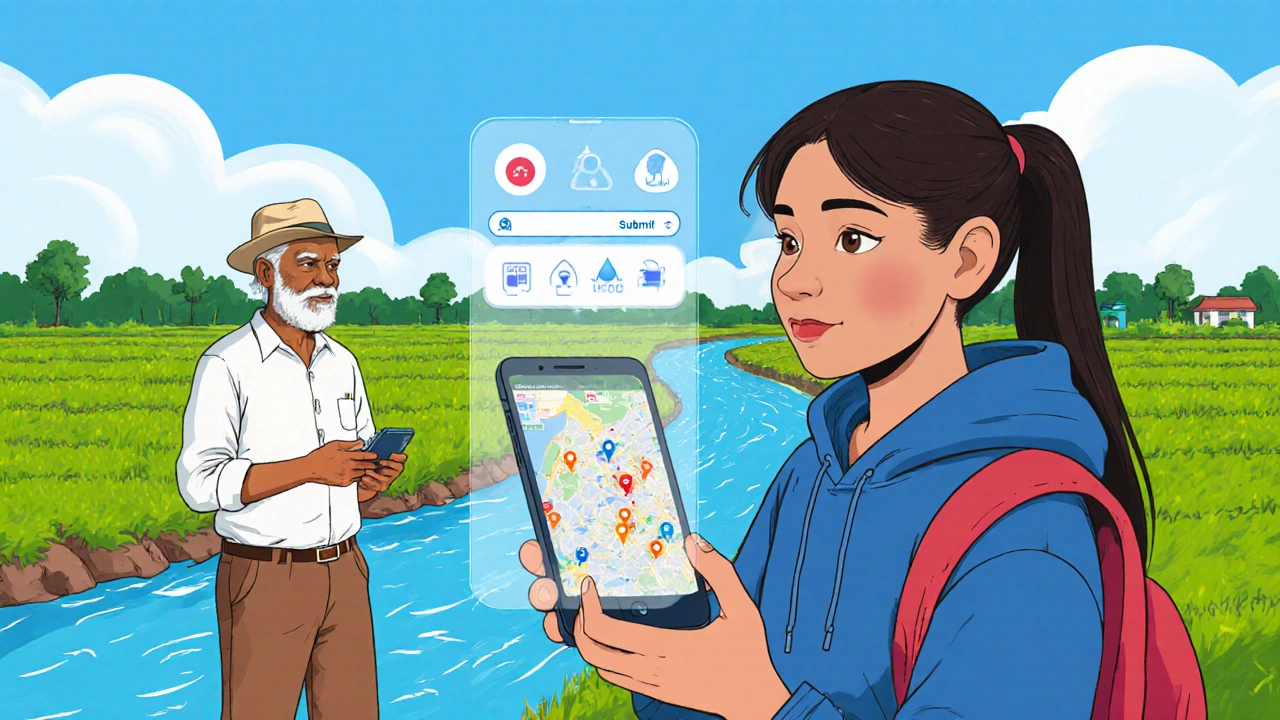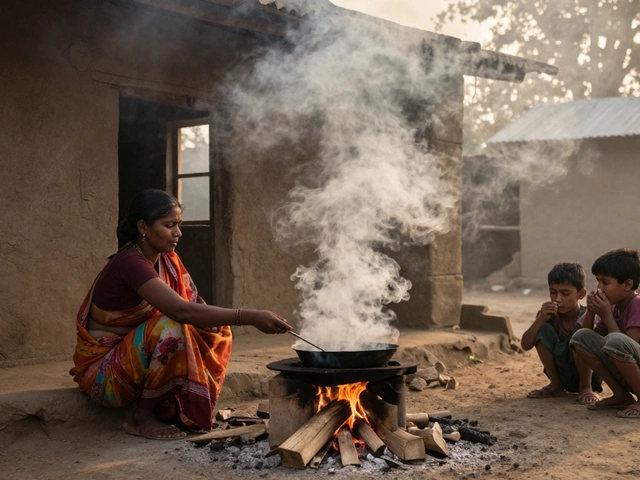Outreach Project Budget Calculator
Calculate Your Outreach Project Budget
Ever wondered why a research lab sends a team to a local school or why a museum hosts a night‑time stargazing event? Those are public outreach projects in action - real‑world efforts that turn complex ideas into experiences anyone can enjoy.
What is a public outreach project?
Public outreach project is a planned activity that connects a scientific, technical, or policy organization with a broader audience, aiming to share knowledge, spark interest, and encourage participation. In plain terms, it’s any organized effort that takes information out of the lab and puts it in people’s hands, whether through a workshop, an online video series, or a citizen‑science survey.
Why do organisations invest in outreach?
Outreach builds trust, attracts new talent, and can even influence funding decisions. A recent survey of Indian research institutes showed that 68% of senior managers view community engagement as a key performance indicator. When the public sees value, they’re more likely to support policies that fund further research.
Core elements that make a project successful
Every good outreach effort rests on a handful of building blocks:
- Stakeholder includes anyone with a vested interest - the sponsoring agency, the outreach team, and the community groups involved.
- Target audience defines who you want to reach, from school children to senior citizens.
- Communication channel is the medium you’ll use - live events, social media, podcasts, etc.
- Evaluation metric lets you measure success, such as attendance numbers, quiz scores, or sentiment analysis.
- Funding source could be a government grant, corporate sponsorship, or internal budget allocation.

Types of public outreach projects
Outreach isn’t one‑size‑fits‑all. Below is a quick look at the most common formats and what makes each unique.
| Format | Typical audience | Key channel | Typical cost | Impact range |
|---|---|---|---|---|
| Live demonstration | Students, families | In‑person events | Medium‑high | Immediate engagement, lasting curiosity |
| Citizen‑science survey | Amateur enthusiasts | Online platform | Low | Data contribution + sense of ownership |
| Social‑media video series | General public | YouTube, Instagram | Low‑medium | Broad reach, shareability |
| Policy brief workshop | Decision‑makers | Hybrid (online + print) | Medium | Direct influence on policy |
| Interactive museum exhibit | Tourists, families | Physical installation | High | Long‑term educational value |
Step‑by‑step guide to launching your own project
- Define the purpose. Ask yourself: Is the goal to raise awareness, collect data, or influence policy? A clear purpose shapes every later decision.
- Identify the target audience. Use demographic data or local community maps. For example, a water‑quality citizen‑science app works best in river‑side towns.
- Tip: Create a simple persona - age, education, tech comfort level.
- Choose the right communication channel. Match audience habits. Teens spend time on TikTok; senior citizens prefer community radio.
- Secure funding. Draft a brief that lists expected outputs, budget, and impact metrics. Highlight how the project aligns with the sponsor’s goals.
- Develop the content. Keep language plain, use visuals, and embed interactive elements. Science communication best practice says visuals improve recall by up to 42%.
- Pilot test. Run a small‑scale version, collect feedback, and refine.
- Common tweak: shorten the registration form to boost sign‑ups.
- Launch and promote. Use press releases, social posts, and partner networks. Timing matters - align with relevant dates (e.g., World Environment Day).
- Measure impact. Track evaluation metric such as participation count, post‑event quiz scores, or media impressions. Present findings in a concise report for stakeholders.
Funding sources and budgeting tips
Public outreach rarely funds itself. Here are realistic avenues:
- Government grants. In India, the Department of Science & Technology offers a “Science Popularisation” scheme, typically providing ₹5‑10lakh per project.
- Corporate CSR. Companies like Infosys and Tata have dedicated education/outreach budgets. Tailor proposals to show brand alignment.
- Foundations. The Tata Trusts and the Bill & Melinda Gates Foundation fund health‑related outreach; a clear impact narrative is essential.
- Crowdfunding. Platforms such as Ketto work well for community‑driven events, especially when you can showcase prototype videos.
When budgeting, separate fixed costs (venue, equipment) from variable costs (printing, travel). Allocate ~10% of total budget for evaluation - without data you can’t prove success.

Impact assessment and continuous improvement
Measuring success goes beyond headcounts. Consider these dimensions:
- Knowledge gain. Pre‑ and post‑surveys help quantify learning. A 2022 study on climate‑awareness workshops in Bangalore showed a 35% rise in correct answers.
- Behavior change. Track actions like sign‑ups for a newsletter or adoption of a new habit (e.g., waste sorting).
- Media reach. Use analytics tools to capture impressions, shares, and sentiment.
- Pro tip: A positive sentiment score above 70% indicates the message resonated.
- Long‑term partnerships. Count the number of NGOs or schools that continue collaborating after the project ends.
Compile these metrics into an impact assessment report and share it publicly - transparency boosts credibility for future projects.
Common challenges and how to overcome them
Even well‑planned projects hit snags. Here are the usual culprits and quick fixes:
- Low attendance. Re‑evaluate promotion channels. Partnering with local schools or community centers often doubles turnout.
- Technical glitches. Always have a backup plan - printed handouts if Wi‑Fi fails, or an offline version of an app.
- Message overload. Keep the core story under 2minutes. Use the “one‑sentence hook” technique: what problem, why it matters, and a call‑to‑action.
- Funding gaps. Stage the project in phases. Secure seed money for a pilot, then use pilot results to attract larger sponsors.
Next steps: turning ideas into action
If you’re ready to start, create a one‑page canvas that captures purpose, audience, channel, budget, and success metrics. Share it with a trusted colleague for quick feedback, then begin scouting local partners. Remember, outreach is a learning loop - each project teaches you what resonates, so iterate fast.
Frequently Asked Questions
What differentiates a public outreach project from a regular press release?
A press release is a one‑off announcement aimed at journalists, while a public outreach project is an intentional, often interactive, effort designed to engage a specific audience over time and measure impact.
How much budget is needed for a small community workshop?
In a city like Bangalore, a modest workshop (venue, basic props, refreshments) can be run for ₹50,000-₹80,000. Allocate about 10% of that amount for post‑event evaluation.
Can digital-only outreach be as effective as in‑person events?
Digital formats reach broader audiences and are cost‑effective, but they often lack the tactile engagement of hands‑on activities. Blending both - a livestream of a lab demo with a follow‑up Q&A - tends to yield the highest impact.
What evaluation metric should I choose for a citizen‑science app?
Track the number of active contributors, data quality scores (e.g., validation rate by experts), and retention rate after the first month. Combining quantity and quality gives a fuller picture.
How do I find partners for my outreach project?
Start with local NGOs, schools, or community clubs that share a related mission. Attend municipal events or university outreach fairs - they’re fertile grounds for finding collaborators willing to co‑host or co‑fund activities.




